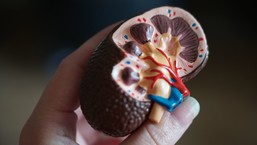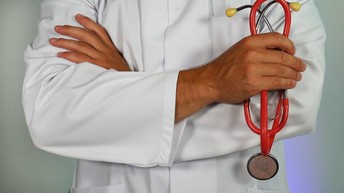|
Hello friends,
It has been an interesting few weeks since our last update! I wanted to share some updates on my recent kidney donation, some exciting activity on the behavioral health front on the North Coast and some great upcoming community events.
Donation Update
If you have been following my social media and newsletter, you likely know that I’ve been going through the process of becoming a living kidney donor. Well, on October 16, all of those efforts finally culminated in a successful donation. |
|
 |
About ten years ago, I was interested in donating to a friend in need of a kidney. After I wasn’t a successful match for her (her mother was!), I realized that it was still an incredibly important thing I wanted to do in my life to help another person, even if I didn’t know who that person was. Though a number of things happened throughout the years creating personal circumstances that made living donation difficult, I finally realized there would be time during the legislative interim to follow through with the donation. After connecting with Donate Life Northwest on the Living Donor Protection Act this past legislative session, I was able to continue my relationship with that organization and navigate the process to finally follow through on “non-directed” or “altruistic” donation with Legacy Good Samaritan Hospital.
There are two ways to donate a kidney: deceased donation (from a deceased donor) and living (from a living person). Even though living organs are much more successful than ones from deceased donors, the vast majority of kidney donations in the United States are from deceased donors. Of living donors, most are “directed,” meaning that you know the recipient and have directed that your kidney go to that person (think of a family member giving to a family member, or a co-worker giving to a co-worker).
Over 100,000 people in the United States are waiting for a kidney right now, and about thirteen people die in this country every day waiting for a transplant (4,745 people per year!). To me, this signals to two huge problems: there simply aren’t enough deceased organ donors, and there also aren’t enough willing living donors for every person who needs a kidney.
Like a lot of people, I think before my potential donation to a friend over ten years ago, I was holding on to my kidney for that opportunity to donate to someone I personally knew, if the situation ever arose. For example, I know a lot of parents hold on to their kidneys in the event that their children might ever need one (though it is important to note that while familial relation increases the chances of a match—it is no guarantee). Even then, if someone goes through the process to donate and realizes they do not match their intended recipient, they often do not continue in the process to see if they might match someone else.
In realizing that there was such a shortage of organs out there, a switch went off in my head—that I was potentially holding on to my kidney, willing to donate it to someone I loved, for a situation that might not ever exist again. Meanwhile, thirteen people die every day--people who have families and friends that might want to donate to their loved ones, but are not a match. What if I could be that match and help them?
Enter into the picture “non-directed” donation.” Though the idea itself is not new, a relatively new concept for paired kidney exchange pioneered by Nobel-prize winning economist Alvin Roth and Lloyd Shapley is—and it’s a process I was able to participate in through my own donation. The idea is to create donation “chains” through people who might not match their intended recipient, but can increase the likelihood of getting an organ for their intended recipient if they still choose to donate to someone else. And if someone chooses to donate altruistically, like I did, the practice can create large chains of donors and recipients. Mine, for example, ended up helping 5 people all over the country! (This great piece from PBS Newshour explains the process a lot better than I can!)
After spending a few days recovering in the hospital, I was discharged this past Saturday and have been just over a week with one kidney. Aside from being the normal “tired” you’d expect from coming out of surgery—I’m otherwise just fine, with a general prognosis of being able to live just as healthy a life as I was before. The remaining kidney, particularly for younger donors, is able to pick up the slack of being down an organ—so I personally have no concerns for my health moving forward.
 |
|
The recovery time itself is about 4-6 weeks, and I think I’m already well on my way. The real reason I took up this much room on the topic in the newsletter, however, is because I want to let people know why it’s important that more people consider non-directed donations. My donation created a chain that helped save the lives of five people—and if just one in every 10,000 people made the same decision to become a donor, we could actually eliminate the waiting list of people who need kidneys in this country. And, at the very least, checking the box to become a deceased organ donor at the DMV also goes a long way to saving lives. You can also register to be a donor online through the Donate Life Northwest website. |
I hope the experience, and the outreach we did with the help of Donate Life Northwest, piques the interest of and raises awareness to others about what it means to give the gift of life through living organ donation. If you think living donation might be something you’re interested in, please contact the folks at Donate Life Northwest. If you ever find yourself in the situation where you have an intended recipient and don’t match them—please consider continuing through the process. Together, we can be a #ForceForLife!
My sincerest thanks to Donate Life Northwest, the amazing staff at Legacy Good Samaritan, my phenomenal husband, Mitch, who was by my side the entire time, my staffer Thomas for keeping the office running while I’m recovering, and finally to every well-wisher who reached out to my office (including the Oregon House Democrats—who sent me flowers!).
Behavioral Health on the North Coast
The day before my surgery I was able to convene a group of stakeholders in the behavioral healthcare world to get feedback on places where our system breaks down and fails those vulnerable people who need services. Though I am vice-chair of a Healthcare Subcommittee on Behavioral Health that will be studying many of the same issues—I feel very strongly that there are certain pieces or the behavioral healthcare system that are very unique to small and rural communities like ours. I hope to bring this feedback to the subcommittee to plant the seeds for improving services for all Oregonians, as well as to utilize the information over time to develop a specific bill to help.
We are in the process of getting invitations out for meetings in December and January, so if you come from an organization that provides care, are a patient, or come into contact with behavioral health—please let my office know if you’d like to join the conversation. |
|
 |
Prepare Your Business to Secure State and Federal Contracts
This event is designed to help local businesses get certified to contract with a long list of STATE and FEDERAL agencies.
The CCC SBDC is partnering with a number of statewide agencies including Business Oregon and the Government Contracting Assistance Program (GCAP) to present a Governor’s Marketplace Roadshow.
“Recently, Gov. Brown signed an executive order directing state agencies to contract with local businesses whenever possible – this workshop has the potential to add a lot of Clatsop County businesses to the list of those local businesses permitted to do business with these agencies.”
- Why is Oregon Certification important?
- What are the public agencies buying?
- Where can you find the opportunities?
- How do you get through all the red tape?
- Is there financing available?
This event will be providing opportunities for businesses to meet directly with procurement professionals from state, federal, private, and non-profit organizations who will share tips, tools, resources and strategies to aid in business growth, more successfully navigate contracting processes, and nurture ongoing relationships.
Clatsop Community College
November 6, 2019
Check in starts at 7:30 AM
8 AM - 2:00 PM
Columbia Hall, room 219
1651 Lexington Ave, Astoria, OR 97103
Click this link to register: https://tinyurl.com/yxzx3wfy
Contact Eloisa Miller at eloisa.miller@oregon.gov for questions.
Oregon Hanford Cleanup Board is Meeting in Astoria
The Oregon Hanford Cleanup Board is a 20-member advisory group and includes 10 citizen members, six state legislators, and representatives from the Governor's Office, the Confederated Tribes of the Umatilla Indian Reservation, and two state agencies.
The Board provides input to the United States Department of Energy (USDOE) and its regulators on the Hanford cleanup. The Board’s key responsibilities include:
- Recommending state policy to the Governor and the Legislative Assembly.
- Keeping key cleanup issues visible.
- Holding USDOE and its contractors accountable.
- Bringing Hanford issues to the public.
- Conveying that the cleanup is a regional issue and that Oregon has a stake in the outcome. Oregon’s primary role at Hanford is to ensure cleanup decisions are protective of the Columbia River.
Monday, November 4 from 1pm – 5pm and Tuesday November 5th from 8:30am – 11:45pm
Cannery Pier Hotel
10 Basin Street
Astoria, Oregon
For questions please contact Ken.niles@oregon.gov.
Keith Jones ‘Don’t Box Me In’ Community Forum
November 7, 2019 10:00 am - 12:00 pm
Location Nehalem Bay United Methodist Church
What does Diversity, Equity and Inclusion really look like?
National Speaker, Keith Jones, will inspire, educate, entertain and keep it very real. As an African American man with a disability – cerebral palsy, Keith has navigated and continues to overcome the perceptions of the world around him. Never one to shy away from those who try to deny his humanity, Keith shares stories from his life to challenge his audiences to examine their perceptions about disability and race.
Free to attend! Light refreshments provided.
Sponsored by FACT Oregon, Sammy’s Place and the Kiwanis Club of Tillamook
AARP Smart Driver
This course, specifically designed for drivers age 50 and older, will help students refresh driving skills, expand knowledge of the rules and hazards of the road, and, therefore, reduce the chances of receiving a traffic violation or getting into an accident. Oregon state law provides a discount on auto insurance premiums for completing this course. One does not have to be a member of AARP to take this class.
Bob Chisholm Community Center
1225 Avenue A – Seaside
November 6, 2019
9:00 am - 4:00 pm
Capitol Phone: 503-986-1432
Capitol Address: 900 Court St NE, H-285, Salem, OR 97301
Email: Rep.TiffinyMitchell@oregonlegislature.gov
Website: http://www.oregonlegislature.gov/mitchell
|